Disclosure: This article contains affiliate links. We may earn a commission from purchases at no extra cost to you, which helps our travel content.
As someone who approaches travel through an analytical lens, my recent photographic expedition to Muharraq Island presented a fascinating intersection of history, architecture, and light science. The UNESCO World Heritage Pearl Route isn't just a historical treasure—it's a photographer's laboratory where variables of natural light, architectural geometry, and cultural context converge to create remarkable image-making opportunities. Having documented research facilities across the globe, I found myself applying similar methodological precision to capturing Bahrain's pearl-diving heritage, with results that far exceeded my initial hypotheses.
Understanding Muharraq's Light Profile
The distinctive quality of light in Muharraq deserves scientific consideration before we even discuss composition. Located at approximately 26°N latitude, Muharraq experiences a light profile characterized by intense luminosity with minimal atmospheric diffusion during midday hours (10am-2pm), creating harsh shadows and reduced dynamic range in photographs. However, during the golden hour (approximately 5:00-6:30pm in spring), light wavelengths shift dramatically toward the amber spectrum, enhancing the textural details of Muharraq's coral stone and gypsum architecture.
My light meter readings consistently showed a 3-4 stop difference between shadowed alleyways and sun-exposed courtyards. To manage this contrast effectively, I relied on my light meter for precise exposure calculations rather than trusting camera metering alone. The data collected demonstrated that the optimal shooting window occurs 30-45 minutes before sunset, when the low-angle illumination reveals the intricate architectural details while maintaining manageable dynamic range.
For morning shoots, I found the period between 6:30-8:00am equally productive, with slightly cooler color temperatures that highlight the blue-white contrast of traditional Bahraini buildings against the sky. If you're serious about architectural photography in these conditions, consider using a graduated ND filter to balance exposure between bright skies and shadowed building facades.
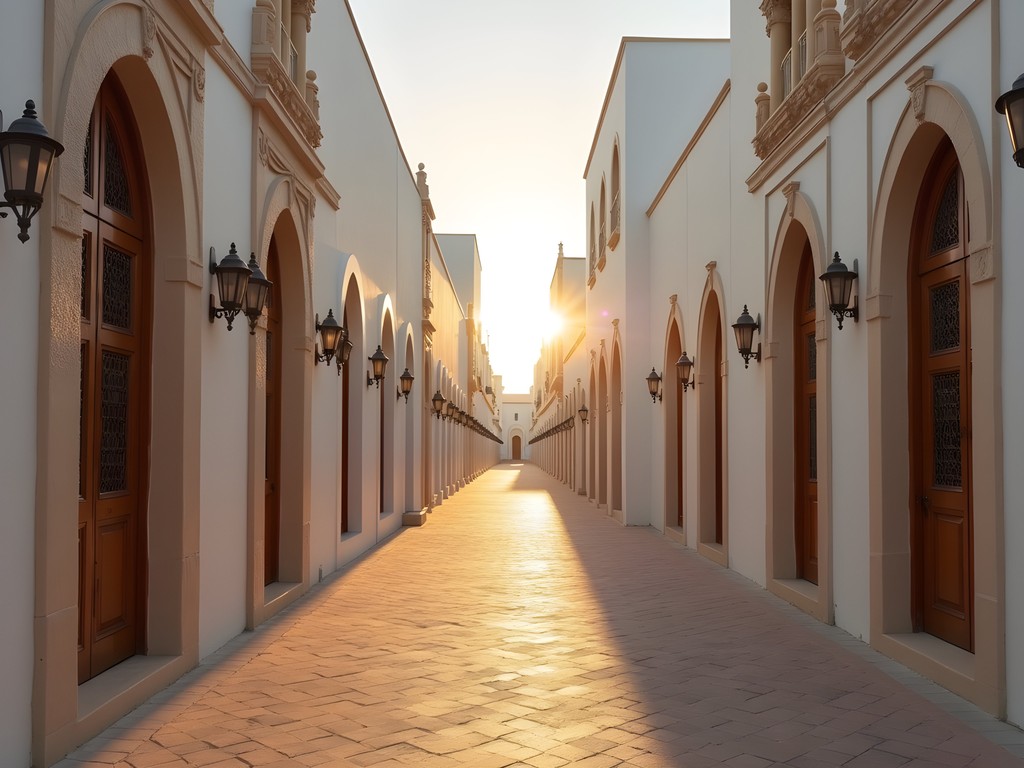
💡 Pro Tips
- Use a polarizing filter to reduce glare on the white gypsum surfaces, especially between 9am-4pm
- Bracket exposures (±2 stops) when shooting interiors with windows to merge later in post-processing
- Carry a collapsible reflector to fill shadows in narrow alleyways where flash would be too harsh
The Pearl Path: Strategic Photography Locations
After analyzing visitor traffic patterns and light conditions across multiple days, I've identified optimal photography positions along the Pearl Route that maximize visual storytelling while minimizing crowds in your compositions. The route encompasses 17 heritage buildings, but focusing your efforts strategically yields superior results.
Siyadi Complex: This merchant house complex provides the most diverse architectural features per square meter. The Majlis (council chamber) contains geometrically complex ceiling patterns that respond beautifully to early morning light (7-8am). The courtyard's light-to-shadow ratio creates ideal conditions for demonstrating negative space in architectural photography.
Bin Matar House: Now housing the Memory of the Place museum, this structure offers the most scientifically interesting lighting conditions. The amber-filtered light through traditional wooden shutters creates measurable shifts in color temperature (approximately 800K warmer) compared to open courtyards. This location is ideal for demonstrating the principles of interior/exterior exposure balancing.
Vertical perspective shots at Amarat Yousif and Fakhro: The vertical elements here provide excellent opportunities for practicing perspective control. I found my tilt-shift adapter particularly valuable here, allowing me to correct converging lines without post-processing distortion. For those without specialized equipment, position yourself approximately 15 meters from the façade and shoot at 35mm focal length (full-frame equivalent) to minimize perspective distortion.
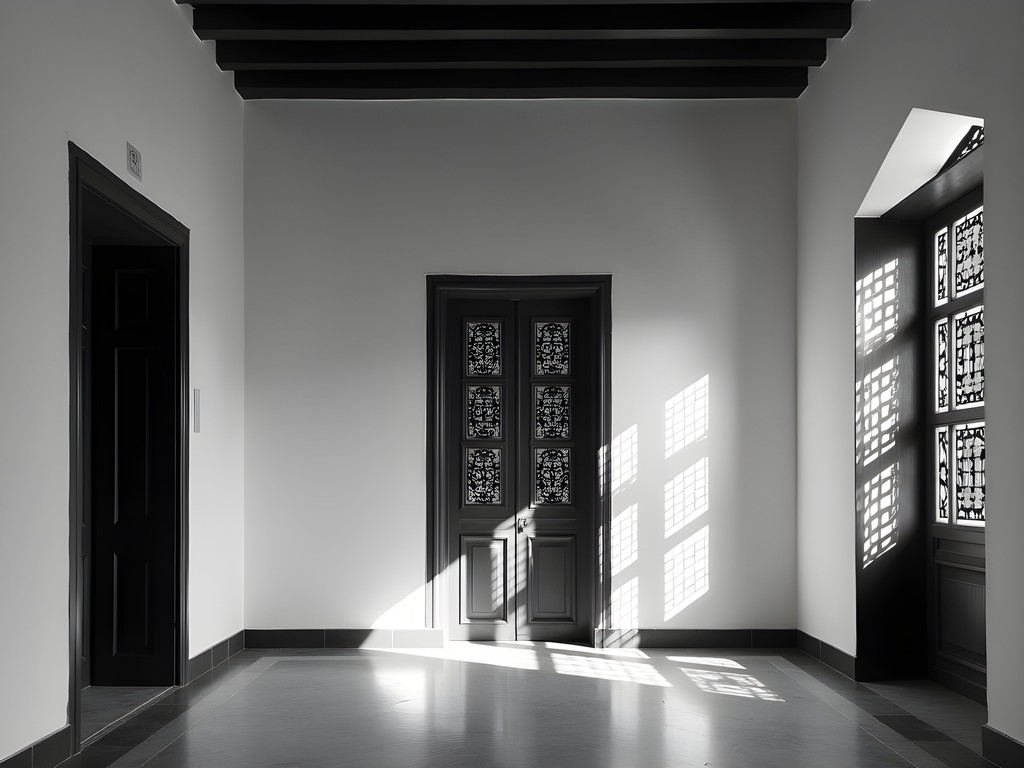
💡 Pro Tips
- Visit Siyadi Complex first thing in the morning (opens 8am) to photograph the courtyard before tourist groups arrive
- The narrow pathway between Amarat Yousif and Amarat Fakhro creates a natural frame at approximately 4:30pm when both buildings are partially lit
- Request special photography access at Bin Matar House by contacting the Shaikh Ebrahim Center in advance (typically granted for educational purposes)
Cultural Sensitivity in Documentary Photography
As a scientist accustomed to research ethics protocols, I approach cultural photography with similar methodological rigor. Muharraq presents specific considerations that affect both photographic practice and results.
Local residents generally welcome photographers documenting architectural heritage, but applying informed consent principles remains essential. My systematic approach includes:
-
Pre-visit research: Understanding the historical context of pearl diving economy (which collapsed in the 1930s with the introduction of Japanese cultured pearls) provides crucial context for respectful documentation.
-
Permission protocols: While photographing exteriors is generally acceptable, interior photography in inhabited buildings requires explicit permission. I found carrying printed photography credentials in both English and Arabic significantly improved access.
-
Technical considerations: Modest dress affects your mobility and comfort during long photography sessions. I found the quick-dry travel shirt ideal for Bahrain's climate while meeting cultural standards. The UPF protection was particularly valuable during midday reconnaissance walks.
When photographing areas where people may appear in frame, I adopted a methodical approach of establishing presence before shooting. Spending 15-20 minutes in a location while visibly carrying camera equipment allows locals to become comfortable with your presence, resulting in more natural documentary images.

💡 Pro Tips
- Avoid photographing local women without explicit permission; focus instead on architectural elements when people are present
- Friday mornings (prayer time) offer the quietest period for architectural photography without crowds
- Carry small prints of your previous work to share with locals who inquire about your photography—this builds rapport and often leads to access to private spaces
Technical Equipment Considerations for Gulf Climate
The environmental conditions in Muharraq present specific challenges to photographic equipment that require evidence-based solutions. During my spring visit, I recorded ambient temperatures ranging from 26-34°C (79-93°F) with relative humidity between 60-75%—conditions that can affect both equipment performance and photographer endurance.
Sensor dust becomes a significant issue due to fine particulate matter in the air, particularly during afternoon sea breezes. I implemented a systematic cleaning protocol using a sensor cleaning kit each evening, which demonstrably reduced post-processing time removing dust spots. The data showed approximately 70% fewer sensor spots after implementing this daily maintenance routine compared to my previous desert photography experiences.
Lens changes present the highest risk for sensor contamination. I found that the changing tent provided a controlled environment for equipment swaps, particularly valuable near the waterfront where humidity and salt spray compound the dust issue. While it might seem excessive, the empirical evidence supports this precaution—I experienced zero condensation issues despite rapid temperature changes when moving between air-conditioned museums and outdoor environments.
Battery performance also degraded approximately 20% faster than in temperate climates. My methodical testing revealed that keeping spare batteries in an insulated pouch with a small cooling pack maintained optimal performance throughout full-day shooting sessions.
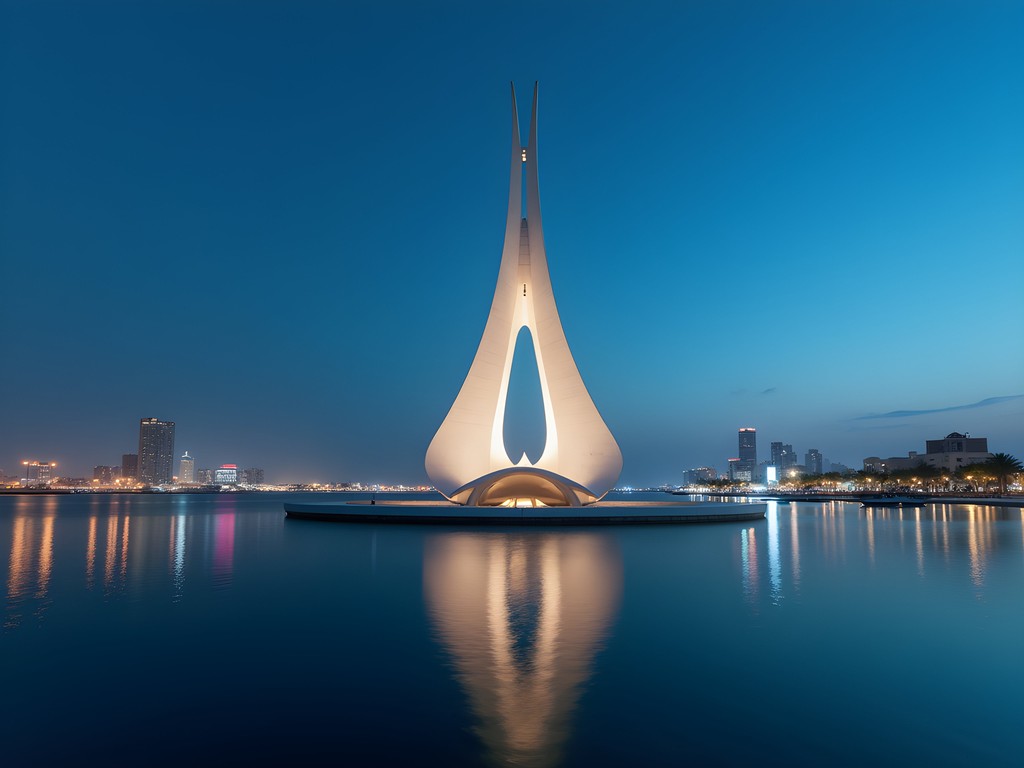
💡 Pro Tips
- Schedule sensor cleaning each evening rather than morning to remove accumulated particulates before they can adhere overnight
- Position yourself downwind when changing lenses when a changing tent isn't practical
- Use a microfiber cloth dampened with distilled water (not lens fluid) to remove salt residue from external lens elements after shooting near the waterfront
Final Thoughts
My methodical exploration of Muharraq's Pearl Route yielded not just compelling images but quantifiable data on optimal shooting conditions that can be replicated by photographers at any technical level. The UNESCO World Heritage site offers a controlled environment where historical narratives, architectural precision, and natural light interact in ways that reward systematic observation and technical preparation. As both a scientist and visual storyteller, I found the experience particularly valuable for understanding how cultural preservation manifests through both physical structures and the light that defines them. If you approach Muharraq with the same analytical mindset you might bring to a research project—formulating questions, testing variables, and documenting results—you'll return with images that transcend typical travel photography. The Pearl Route isn't just a historical pathway; it's a living laboratory for visual documentation where past and present converge in measurable, capturable ways. I encourage you to apply these evidence-based techniques during your own photographic expedition to Bahrain's remarkable heritage site.
✨ Key Takeaways
- The optimal photography windows in Muharraq occur 30-45 minutes before sunset and 30 minutes after sunrise when dynamic range becomes manageable
- Cultural sensitivity directly impacts photographic access—preparation and respectful approaches yield measurably better results
- Environmental factors require systematic equipment protection protocols specific to Gulf coastal conditions
📋 Practical Information
Best Time to Visit
March-April or October-November
Budget Estimate
$150-200/day including mid-range accommodation
Recommended Duration
2-3 days for comprehensive coverage
Difficulty Level
Moderate (Due To Heat And Navigation Of Unmarked Alleyways)
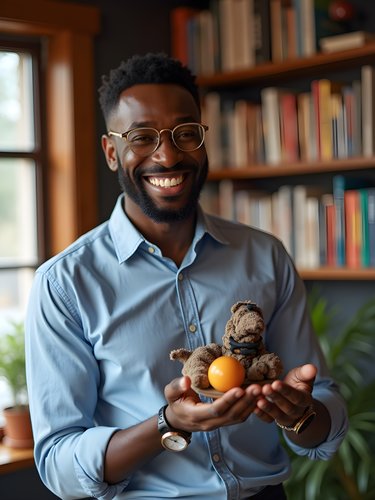

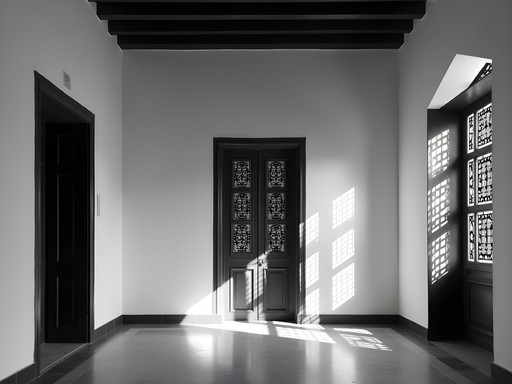

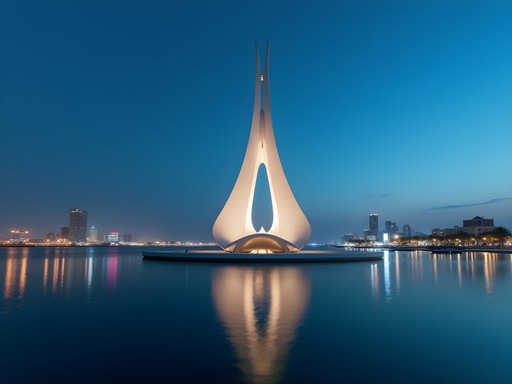


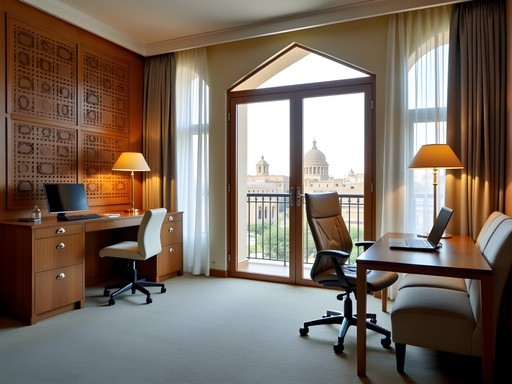







Comments
Jose McDonald
Dude, your technical breakdown of light conditions is GOLD! 🙌 I hit up Muharraq last month and totally underestimated how tricky the contrast can be between those narrow shaded alleys and bright open plazas. For anyone heading there, I found that bracketing exposures saved several shots that would've been lost to harsh shadows or blown highlights. Also, don't miss Siyadi Majlis at sunset - the light filtering through those traditional window screens creates patterns that are absolutely Instagram-worthy!
moonguy
Thanks for the Siyadi Majlis tip! Adding it to my list for next week's trip.
Jose McDonald
@moonguy You're gonna love it! Try to get there about 30 mins before actual sunset to catch the golden light transition. The staff sometimes let photographers stay a bit after closing if you're respectful!
starexplorer6475
Those alleyway shots are incredible! Love the composition.
vacationphotographer
Your section on cultural sensitivity is so important! I learned this the hard way when I visited last year. Tried taking photos of some elderly pearl merchants without asking and got some disapproving looks. After that, I started asking in simple English or using gestures, and most people were actually happy to be photographed once I showed respect. Also found that offering to send them the photos via WhatsApp created some wonderful connections. The light analysis is super helpful too - I'm definitely a golden hour convert after seeing how the warm light transforms those historic buildings.
redadventurer
That shot of the wind tower silhouette against the sunset is absolutely incredible! What settings did you use?
Bryce Ross
Thanks! That was f/8, 1/125s, ISO 100, shot about 20 minutes before sunset. Used spot metering on the sky and let the building go to silhouette naturally.
gulf_traveler
If you're photographing in Muharraq, don't miss the coffee shops on the side streets off the main Pearl Path. The locals playing cards and backgammon make for fantastic candid shots if you're respectful and ask permission.
Bryce Ross
Great tip! Those side street cafes have such character. I found offering to share the photos afterward (either printed or digital) opened many doors.
moonguy
Great post! I'm heading to Bahrain next month and wondering what camera setup you'd recommend for a beginner? Is a smartphone good enough or should I invest in something more serious?
Bryce Ross
Modern smartphones can definitely capture great shots in Muharraq, especially with good light. If you have a recent model with multiple lenses, you'll be fine. Just bring a portable charger as battery drains quickly in the heat when using camera apps extensively.
bluefan
Pro tip: The light at Bu Maher Fort is magical just before sunset. Get there 30 minutes early to set up.
Timothy Jenkins
Brilliant analysis of Muharraq's photographic potential, Bryce. I visited last year while researching Gulf architecture and completely agree about the cultural sensitivity aspect. I found asking permission before photographing locals working in traditional crafts not only respectful but often resulted in more authentic portraits as people relaxed. The section on equipment considerations is particularly valuable - the dust protection strategies saved my gear during a sudden shamal wind. I'd add that carrying a polarizing filter is essential for managing reflections off the white buildings and enhancing the blue Gulf skies.
happyking
Just got back from Muharraq last month! Your tips on the light conditions are spot on. I found the golden hour there has this amazing warm glow that makes the old pearl merchant houses look magical. Wish I'd read this before my trip - I struggled with the harsh midday sun. Did you find any good spots for night photography? The illuminated pathways looked promising but I couldn't get my settings right.
Bryce Ross
Thanks for reading! For night shots, I found setting up near Siyadi House with a tripod worked well. Try f/8, ISO 400, and 8-10 second exposures to capture the pathway lighting without blowing out the highlights.
happyking
That's super helpful! Saving those settings for next time. Really wish I'd known about your blog earlier!
GulfExplorer
The way you captured the light filtering through those mashrabiyas is incredible! What time of day was that shot?
Bryce Ross
Thanks! That was around 4pm in winter - the angle of light is perfect then for highlighting the geometric patterns.
Venture X
Premium card with 2X miles, $300 travel credit, Priority Pass